Butterflies turn New Jersey’s suburban landscapes into living works of art.
More than just beautiful visitors, these delicate insects play a vital role in keeping our gardens blooming and ecosystems healthy.
Beloved backyard regulars and surprising rarities, these twelve butterfly species have found smart ways to thrive alongside people in New Jersey’s neighborhoods and parks.
1. Monarch Butterfly: The Royal Wanderer
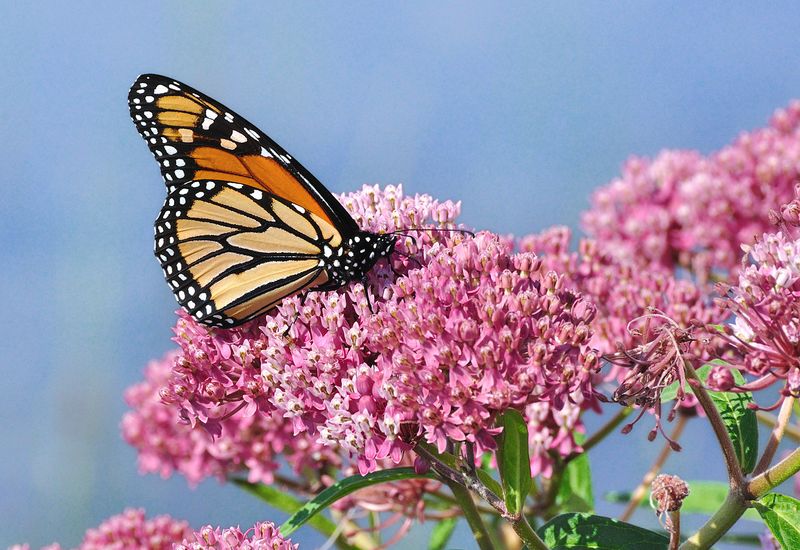
Orange wings flashing like warning signals, Monarchs command attention whenever they visit New Jersey gardens. Their incredible 3,000-mile migration to Mexico makes them true marathon champions of the insect world.
I’ll never forget watching a cloud of Monarchs descend on my neighbor’s milkweed patch last September—like living stained glass catching the afternoon light. Their caterpillars feed exclusively on milkweed, storing toxic compounds that make adults unpalatable to predators.
Plant native milkweed varieties in your yard to support these declining travelers whose populations have dropped by 80% in recent decades.
2. Eastern Tiger Swallowtail: Yellow Giants of the Garden
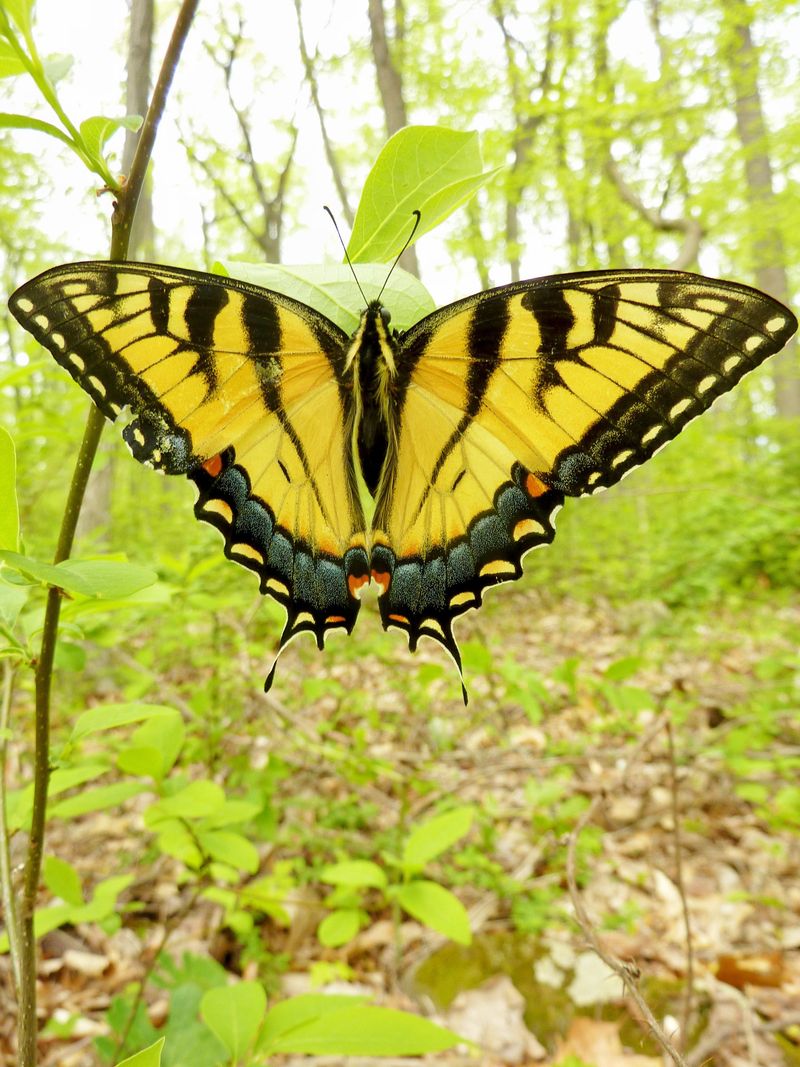
Sunshine takes wing form in the Eastern Tiger Swallowtail. These massive butterflies—with wingspans reaching 5.5 inches—create living art as they drift between suburban flowering trees and garden blooms.
Males have vibrant yellow wings with distinctive black tiger stripes, while females come in both yellow and darker charcoal variations. Their caterpillars begin life resembling bird droppings (clever disguise!) before maturing into bright green larvae with fake eyespots that startle would-be predators.
Tulip trees, wild cherry, and sweet bay magnolia serve as host plants for these magnificent creatures that bring a touch of wild majesty to suburban settings.
3. Red Admiral: The Territorial Flash
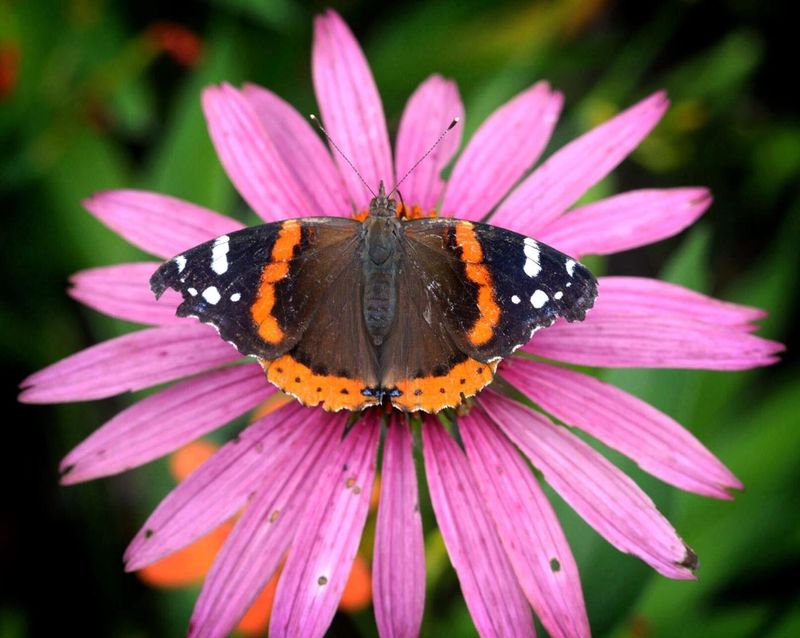
Bold red bands slice across the dark wings of this feisty butterfly, creating nature’s perfect warning sign. Red Admirals stake out sunny spots in New Jersey yards, often returning to the same perch after brief territorial battles with other insects.
These butterflies aren’t shy around humans—they’ve landed on my arm several times while I’ve gardened, seemingly curious about my activities. Their caterpillars feed primarily on nettles, creating small leaf tents for protection.
Unlike most butterflies, Red Admirals can actually spend the winter in New Jersey as adults. They cozy up in tree hollows or garden sheds during the cold months, then reappear with the first warm days of spring.
4. Painted Lady: The Cosmopolitan Beauty
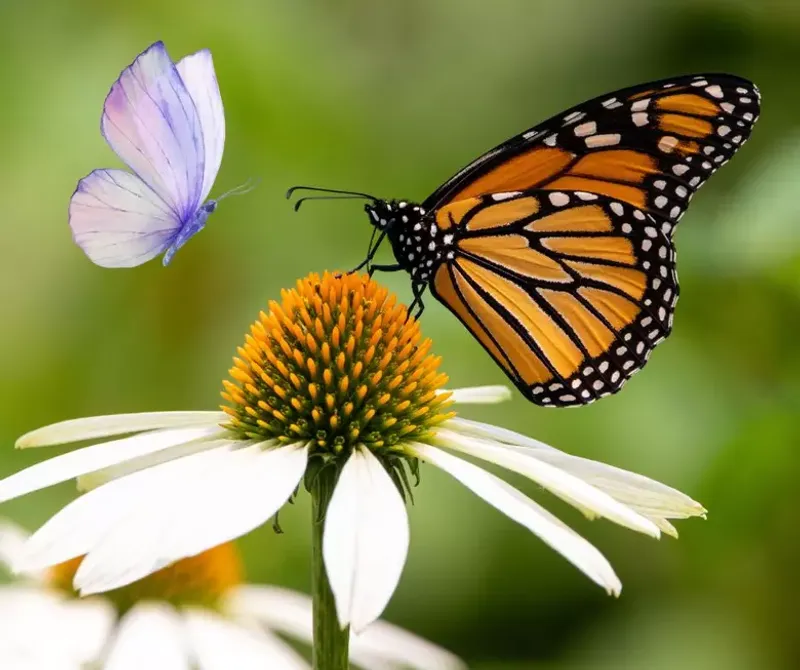
Found on every continent except Antarctica, Painted Ladies earn their nickname as the world’s most cosmopolitan butterfly. Their orange-brown wings decorated with black and white spots create a stained-glass effect when sunlight filters through them in flight.
These butterflies arrive in New Jersey each spring after migrating from the southern United States. Instead of heading south like their Monarch cousins, Red Admirals stay put and start new generations that keep the cycle going.
Thistles serve as their primary caterpillar host plants, but adults feast on nectar from almost any flowering plant. Their adaptability explains why they thrive in suburban environments where manicured gardens provide abundant food sources.
5. Black Swallowtail: The Parsley Lover
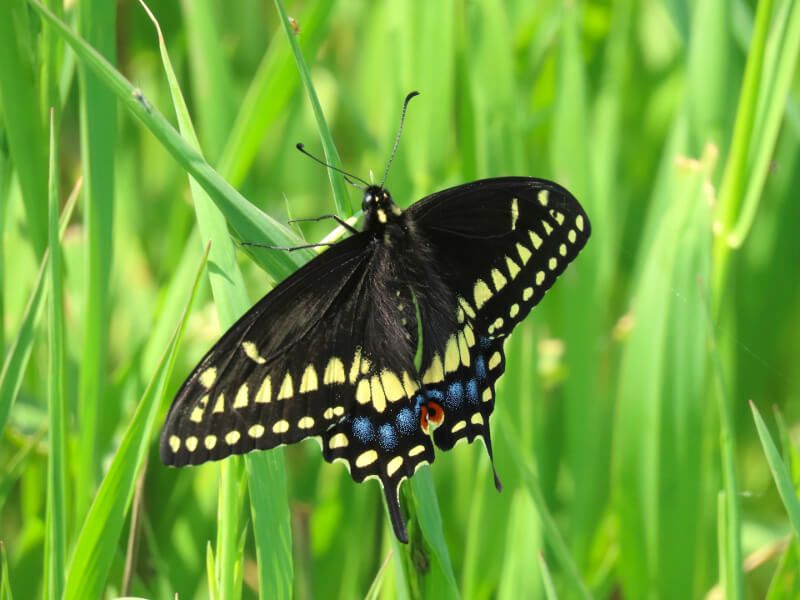
Gardeners growing herbs often encounter this stunning butterfly’s caterpillars munching happily on parsley, dill, or fennel. Black Swallowtails sport velvety black wings adorned with yellow spots and iridescent blue patches that shimmer in sunlight.
Males patrol territories in open suburban areas, performing spectacular aerial displays to attract females. The caterpillars’ remarkable defense mechanism involves extending a bright orange, forked organ called an osmeterium when threatened—releasing a pungent odor that deters predators.
My herb garden has become an unintentional nursery for these beauties. I’ve learned to plant extra parsley, watching with delight as striped green caterpillars transform into chrysalides that perfectly mimic small twigs.
6. American Snout: The Peculiar Proboscis
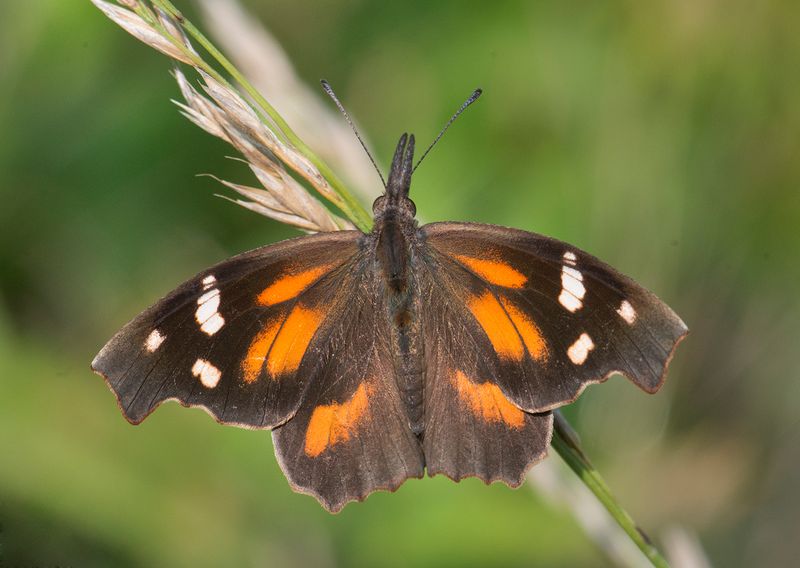
Nature’s expert in disguise, the American Snout resembles a dead leaf when its wings close. The butterfly’s extended nose-like structure (actually elongated mouthparts called palpi) completes the perfect camouflage by mimicking a leaf stem.
These tricksters appear in New Jersey suburbs during late summer, often forming small groups on hackberry trees—their caterpillars’ exclusive food source. Their angular wings and fluttery path make them instantly recognizable to butterfly enthusiasts.
American Snouts occasionally stage massive migrations in southern states, but New Jersey typically hosts smaller, localized populations. Plant hackberry trees in your suburban landscape to attract these quirky characters with their leaf-mimicking talents.
7. Mourning Cloak: The Winter Survivor

Velvety maroon-brown wings edged with creamy yellow borders make the Mourning Cloak instantly recognizable. These hardy butterflies emerge on the first warm days of late winter—sometimes when snow still covers the ground!
Unlike most butterflies, Mourning Cloaks can live up to 10 months, overwintering as adults in tree cavities or under loose bark. They rarely visit flowers, preferring to feed on tree sap, rotting fruit, and even animal droppings.
The caterpillars feed together on willows, elms, and poplars common in New Jersey suburbs. These butterflies’ ability to survive freezing temperatures makes them among the first harbingers of spring in suburban parks and wooded neighborhoods.
8. Common Buckeye: The Eyespot Expert
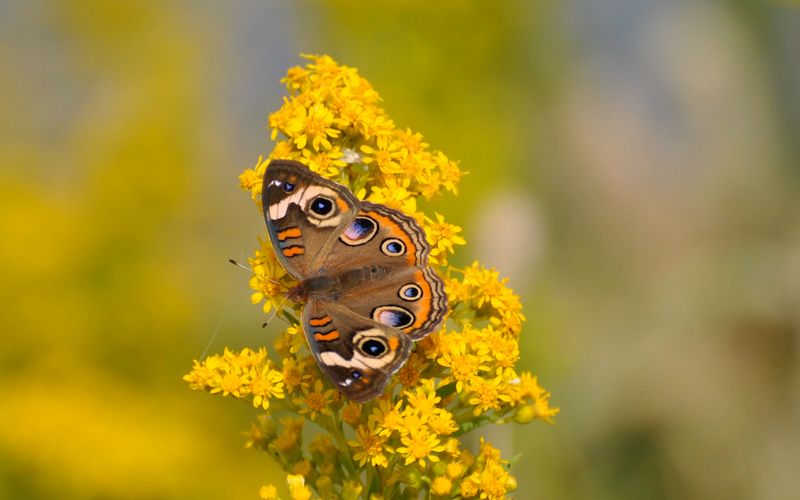
Hypnotic eyespots dominate the wings of the Common Buckeye, creating a mesmerizing display that confuses predatory birds. These medium-sized butterflies patrol open areas in New Jersey suburbs, often landing on bare ground to bask in the sun.
The caterpillars feed on plantain, snapdragon, and toadflax—common weeds in suburban lawns and gardens. Their preference for disturbed areas makes them well-adapted to human-modified landscapes.
Last summer, a Buckeye landed repeatedly on my garden path, closing and opening its wings like a slow-motion camera shutter, displaying those remarkable eye patterns. These butterflies migrate south for winter but return each spring to New Jersey’s suburban sanctuaries.
9. Spicebush Swallowtail: The Shadow Dancer

Midnight-blue wings shimmer with a vibrant green hue when Spicebush Swallowtails catch the light. These elegant fliers create living shadows as they drift through suburban gardens and woodland edges in search of their host plants.
Their caterpillars perform an astonishing magic trick—younger larvae resemble bird droppings, while mature caterpillars develop false eyespots and a snake-like appearance, complete with a forked tongue imitation! They feed exclusively on spicebush and sassafras trees common in New Jersey’s natural areas.
Female Spicebush Swallowtails perform an elaborate dancing flight while depositing eggs, hovering briefly at each potential host plant before carefully placing a single egg on the underside of a leaf.
10. Question Mark: The Punctuation Flyer

Named for the small silver marking on its underwing that resembles a question mark, this orange and black butterfly brings typographical flair to New Jersey gardens. Their jagged wing edges create a torn-leaf appearance when resting with closed wings.
Question Marks belong to the fascinating group known as ‘anglewing’ butterflies. They rarely visit flowers, preferring tree sap, rotting fruit, and even animal droppings as food sources.
The summer and winter forms differ dramatically—summer butterflies sport bright orange upperwings while winter forms appear darker and more camouflaged. Their caterpillars feed on elm, hackberry, and nettles, making suburban neighborhoods with diverse tree species ideal habitats.
11. Viceroy Butterfly: The Royal Mimic
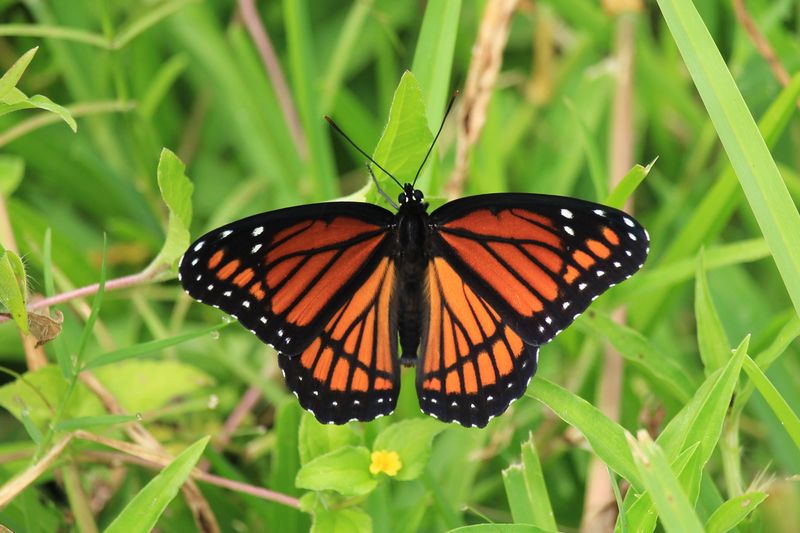
Master of deception, the Viceroy perfectly impersonates the toxic Monarch butterfly—an evolutionary strategy called Batesian mimicry. Look closely for the telltale black line crossing the hindwings that distinguishes this impostor from its royal model.
Viceroys flourish in New Jersey suburbs with willow, poplar, or cottonwood trees that support their caterpillars. Unlike Monarchs, they don’t migrate, instead overwintering as partially grown caterpillars rolled into leaf shelters.
Watching a bird avoid a Viceroy after a bad experience with a Monarch demonstrates natural selection in action. These butterflies benefit from living near residential areas where homeowners plant butterfly gardens that attract their toxic lookalikes—proving imitation truly is the sincerest form of survival.
12. Great Spangled Fritillary: The Silver-Spotted Wonder
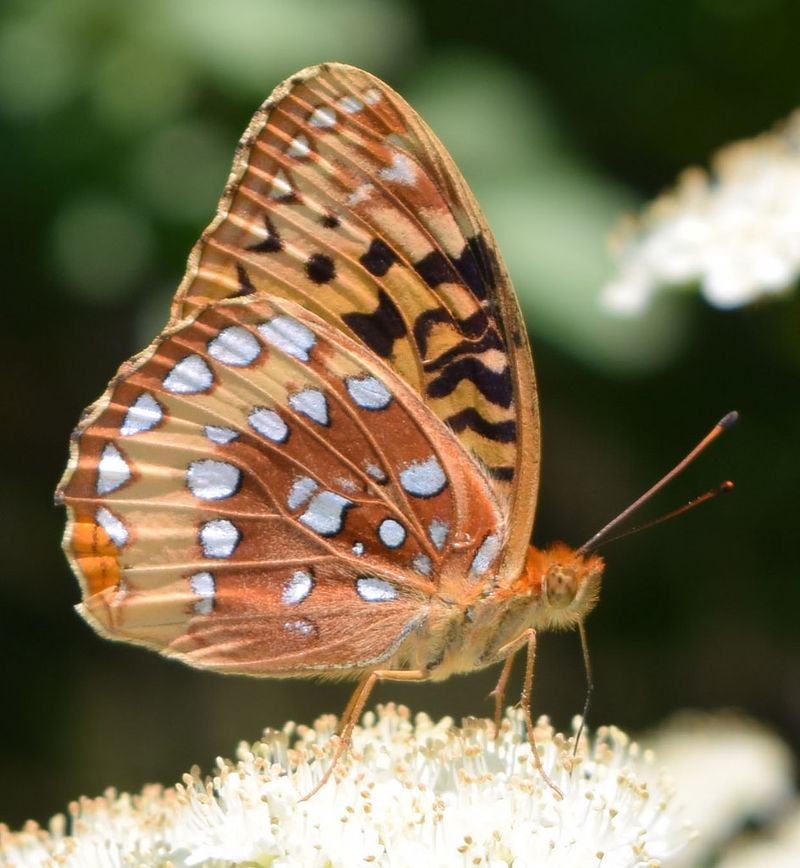
Sunrise orange wings adorned with dramatic black spots characterize this large, fast-flying butterfly. Flip a Great Spangled Fritillary over, and you’ll discover its namesake feature—large, silvery spots spangling the underwings like metallic sequins.
Female fritillaries perform a peculiar egg-laying ritual, depositing eggs near (but not on) violets—their caterpillars’ sole food source. The newly hatched caterpillars immediately enter hibernation without feeding, awakening in spring to feast on fresh violet leaves.
These butterflies particularly love purple coneflowers and black-eyed Susans common in New Jersey’s suburban gardens. Their powerful flight and large size make them impossible to miss as they patrol neighborhood yards and parks throughout summer.
